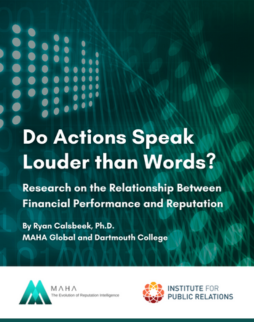
This blog is provided by IPR based on the original study by RAND Corporation
As the popularity and use of social media continues to climb, concerns of quickly spreading disinformation also increase. In 2019, it was confirmed that Russia interfered with the 2016 election through social media propaganda and disinformation. Since then, other instances of disinformation have caught the attention of the public and U.S. government.
RAND Corporation conducted a study of how disinformation campaigns pervade social media, commissioned by the U.S. Air Force Special Operations Command.
To facilitate this, RAND asked the following questions: How are state adversaries using disinformation on social media to advance their interests, and what does the joint force need to be prepared to do in response? Additionally, what are the joint force, U.S. government, civil society, and private industry doing to combat these threats? How effective are these efforts, and what more needs to be done?
Methodology
Research involved both primary and secondary sources. The study primarily relied on more than 150 interviews with officials who are affected by foreign disinformation campaigns. Participants included U.S. airmen, foreign government officers, think tank analysts, and journalists.
Key Findings
Smaller, locally popular social media platforms could be at higher risk of disinformation than larger, mainstream ones.
The most popular social media platforms, Facebook and Twitter, are not necessarily the ones most at risk of disinformation. Instead, it is smaller platforms that are more susceptible. These platforms have narrow audiences, but can reach key groups of a specific region, age, or other factor that are targeted in disinformation campaigns. Smaller networks also lack the resources to adequately fight disinformation. Due to this, disinformation can be cultivated on a smaller platform before shifting to a larger one and rapidly gaining traction, by which point an effective response is not likely.
The effectiveness of disinformation remains unknown.
Though some disinformation campaigns have been noted to have short-term operational impact, it is difficult to demonstrate if they produced strategic-level effects. Researchers infer that the sheer breadth and prevalence of some campaigns make it likely that at least some goals were achieved. This might include changing the opinions of a key audience or convincing them to take an action they wouldn’t have otherwise. The indefinite extent of the effects of disinformation indicate that it is a considerable threat on social media.
The U.S. government does not have a coordinated, standardized response to disinformation campaigns.
The task of countering foreign information campaigns is distributed among multiple U.S. government agencies, with no singular organization heading the effort. Measuring effectiveness of these individual efforts is difficult, as agencies cannot be certain if true attitudes or behavior have been impacted and disinformation successfully combatted.
Are nongovernmental organizations (NGOs) the linchpin of this fight?
NGOs provide some of the most effective responses to disinformation campaigns for two reasons. First, these groups have information expertise and talent not available in the public sector. Second, they are viewed as a credible and authentic source, as is the information they share. Relying on NGOs to be an honest source would be beneficial due to their independence of government control, but it is also important to note that their interests are not necessarily entirely aligned with government agencies.
Moving Forward
The U.S. government was urged by researchers to publish a counter-disinformation strategy, which could also be useful to external stakeholders looking to assist in this cause. Also called on are industry groups and NGOs, which can be leveraged to help fight disinformation on social media. The study concludes that any effort would need to be collaborative among multiple sectors and constantly evolve as technology and the geopolitical situation develop.
Implications for Communication Practitioners
As the social media environment shifts in coming years, it is critical to be aware of disinformation campaigns and how to respond to them. Communicators working with government agencies should consider how this trend might affect their practices. Overall, it is important to not underestimate the damaging potential of foreign disinformation campaigns or the benefits of having a response plan. Strategic lessons can be taken from the efforts of other countries and groups who have attempted to fight disinformation on social media. Staying vigilant and accurate on social platforms can help organizations and consumers remain in a stable, authentic information environment.
![]()
 Soumya Kona is a senior public relations major at the University of Florida and a Communications Assistant at the Institute for Public Relations. Follow her on LinkedIn.
Soumya Kona is a senior public relations major at the University of Florida and a Communications Assistant at the Institute for Public Relations. Follow her on LinkedIn.



